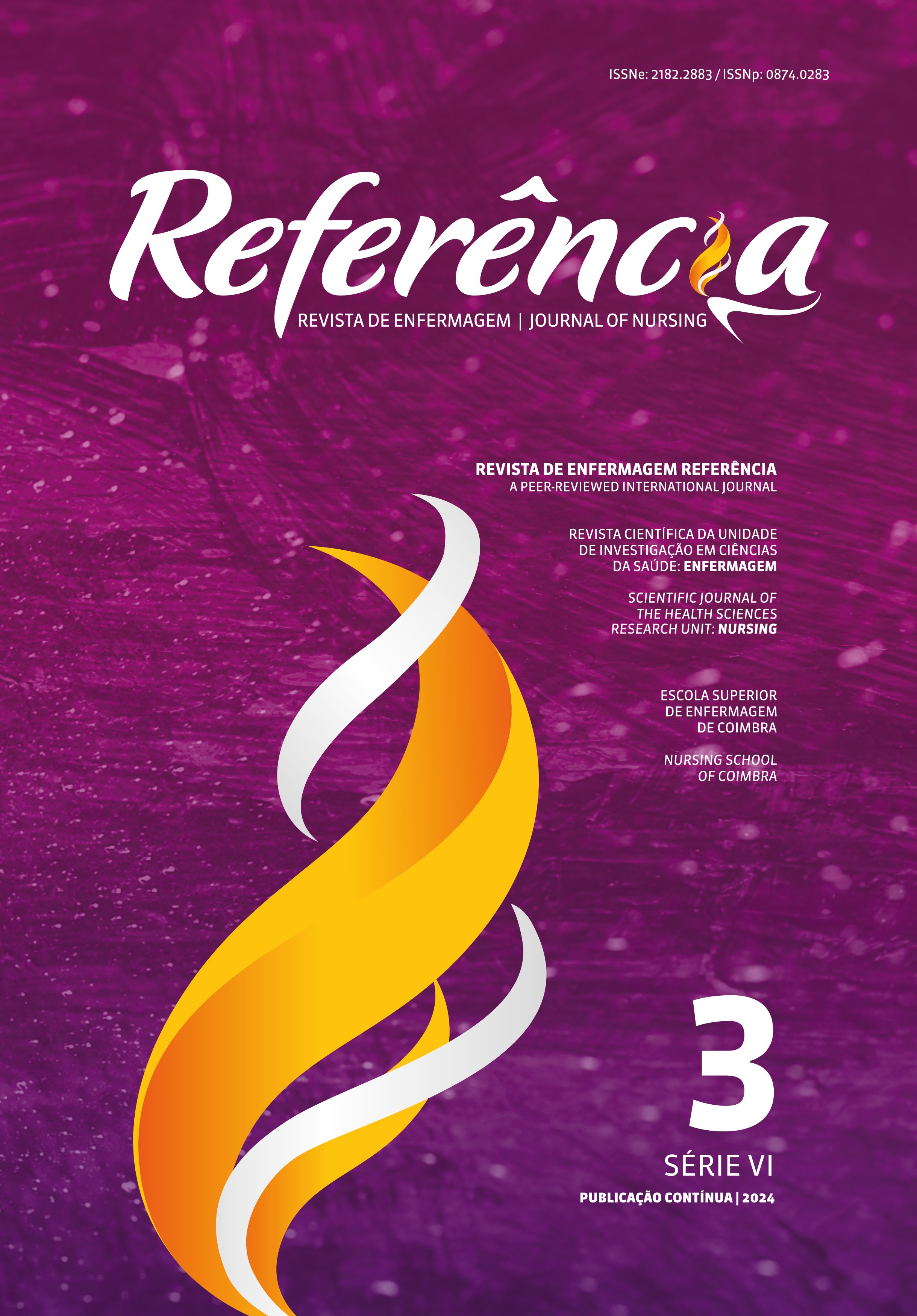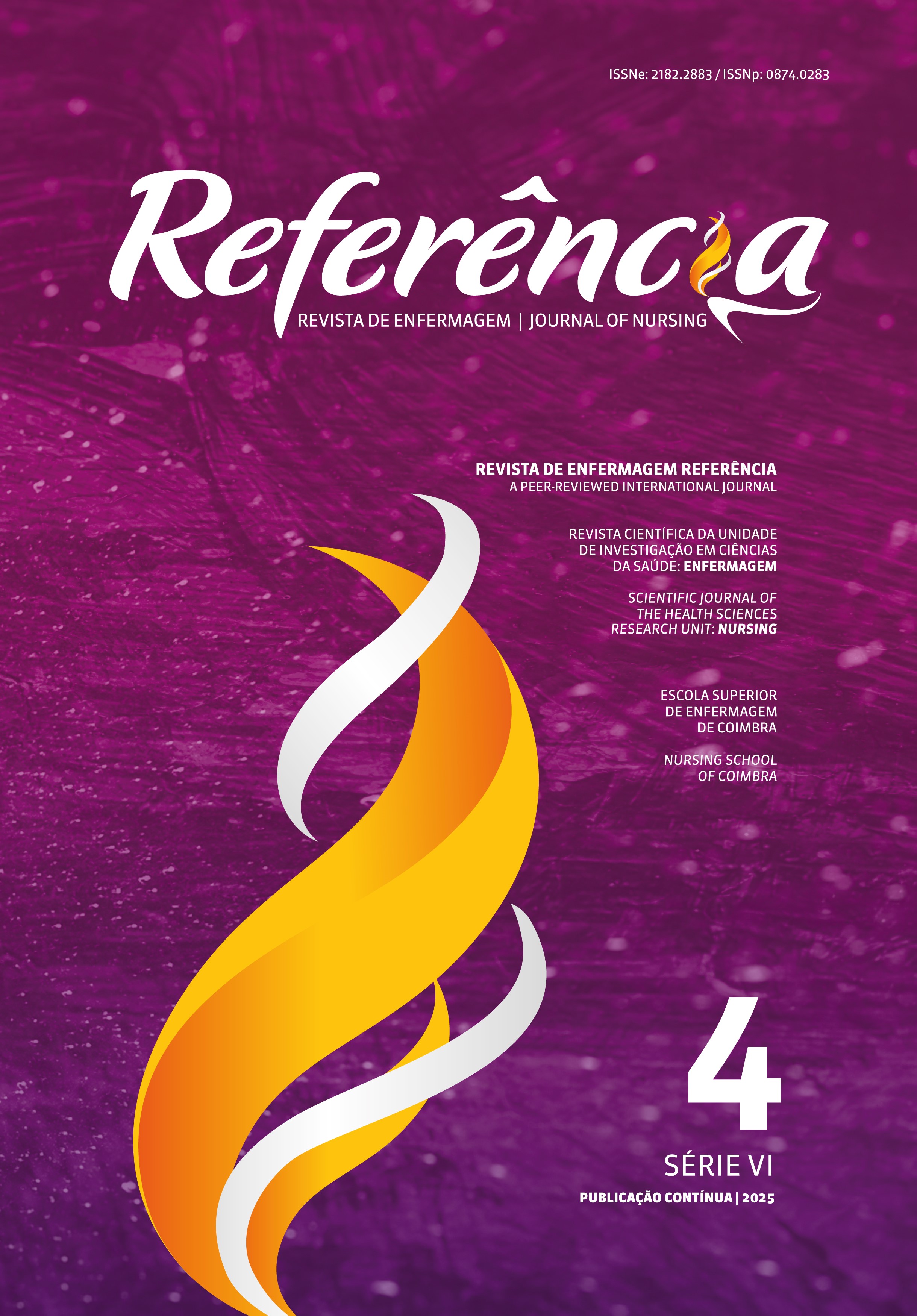Validation of a forensic evidence collection and preservation protocol in emergency settings: Delphi technique
DOI:
https://doi.org/10.12707/RVI23.119.33125Keywords:
clinical protocols, nursing assessment, forensic nursing, Delphi techniqueAbstract
Background: Emergency nurses play a fundamental role in investigating crimes and collaborating with criminal police bodies to collect forensic evidence. This responsibility requires appropriate knowledge, techniques, and equipment. The link between health care and the procedural legal system prevents unnecessary destruction of evidence and improves investigation outcomes.
Objective: To build a forensic evidence collection and preservation protocol for the emergency department and validate its content.
Methodology: A quantitative methodological study with a descriptive approach was carried out with 24 experts: seven nurses, two officers of the National Republican Guard (GNR), six officers of the Portuguese Criminal Investigation Police (PJ), and nine officers of the Public Safety Police (PSP) using the Delphi technique. The content validity index = 0.75 was used.
Results: After Round 2, a content validity index of 0.89 was found for the 19 items included in the protocol.
Conclusion: The protocol is considered an essential tool to improve the collection and preservation of forensic evidence in emergency settings.
Downloads
References
Alexandre, N. M., & Coluci, M. Z. (2011). Validade de conteúdo nos processos de construção e adaptação de instrumentos de medidas. Ciência & Saúde Coletiva, 16(7), 3061–3068. https://doi.org/10.1590/S1413-81232011000800006
Berishaj, K., Boyland, C. M., Reinink, K., & Lynch, V. (2020). Forensic nurse hospitalist: The comprehensive role of the forensic nurse in a hospital setting. Journal of Emergency Nursing, 46(3), 286–293. https://doi.org/10.1016/j.jen.2020.03.002
Chang, A. M., Gardner, G. E., Duffield, C., & Ramis, M.-A. (2010). A delphi study to validate an advanced practice nursing tool. Journal of Advanced Nursing, 66(10), 2320–2330. https://doi.org/10.1111/j.1365-2648.2010.05367.x
Direção-Geral da Saúde. (2016). Violência interpessoal: Abordagem, diagnóstico e intervenção nos serviços de saúde (2a ed.). https://www.dgs.pt/accao-de-saude-para-criancas-e-jovens-em-risco/ficheiros-externos/violencia_interpessoal-pdf.aspx
Donaldson, A. E. (2020). New Zealand emergency nurses knowledge about forensic science and its application to practice. International Emergency Nursing, 53, 100854. https://doi.org/10.1016/j.ienj.2020.100854
Dumarde, L. T., Bonela, L. Z., Guimarães, S. O., Carvalho, R. F., Junior, R. M., & Delecrode, T. A. (2022). Enfermagem forense em urgência e emergência: Uma nova perspectiva de abordagem. Global Academic Nursing Journal, 3(3), e296. https://doi.org/10.5935/2675-5602.20200296
Filmalter, C. J., Heyns, T., & Ferreira, R. (2018). Forensic patients in the emergency department: Who are they and how should we care for them? International Emergency Nursing, 40, 33–36. https://doi.org/10.1016/j.ienj.2017.09.007
Foresman-Capuzzi, J. (2014). CSI & u: Collection and preservation of evidence in the emergency department. Journal of Emergency Nursing, 40(3), 229–236. https://doi.org/10.1016/j.jen.2013.04.005
Furtado, B. M., Fernandes, C. L., Silva, J. O., Silva, F. P., & Esteves, R. B. (2021). A perícia na enfermagem forense: Trajetórias e possibilidades de atuação. Revista da Escola de Enfermagem da USP, 55, e20200586. https://doi.org/10.1590/1980-220X-REEUSP-2020-0586
Gomes, A. (2014). Enfermagem forense: Volume 1. Lidel. Instituto Medicina Legal e Ciências Forenses. (2013). Recomendações para a gestão de vestígios forenses.
Lynch, V. A., & Duval, J. B. (2011). Forensic nursing science (2ª ed.). Elsevier.
Marôco, J. (2010). Análise estatistica com o pasw statistics. Report Number.
Marques, J. B., & Freitas, D. (2018). Método delphi: Caracterização e potencialidades na pesquisa em educação. Pro-Posições, 29(2), 389-415. https://doi.org/10.1590/1980-6248-2015-0140
McGillivray, B. (2005). The role of victorian emergency nurses in the collection and preservation of forensic evidence: A review of the literature. Accident and Emergency Nursing, 13(2), 95–100. https://doi.org/10.1016/j.aaen.2004.09.001
Melo, R. P., Moreira, R. P., Fontenele, F. C., Aguiar, A. S., Joventino, E. S., & Carvalho, E. C. (2011). Critérios de seleção de experts para estudos de validação de fenômenos de enfermagem. Revista Rene, 12(2), 424-431. http://www.repositorio.ufc.br/handle/riufc/4007
Mota, E. M., Cunha, M., & Santos, E. (2021). Cuidados de enfermagem forense: Uma análise dos conhecimentos e práticas de enfermeiros portugueses. Millenium, 2(9), 149-160. https://doi.org/10.29352/mill029e.25287
Niederberger, M., & Spranger, J. (2020). Delphi technique in health sciences: A map. Frontiers in Public Health, 8. https://doi.org/10.3389/fpubh.2020.00457
Pires, M. G. (2021). Implementação de um programa de melhoria da qualidade na área da preservação de vestígios forenses em meio hospitalar [Dissertação de mestrado, Instituto Politécnico de Viseu, Escola Superior de Saúde de Viseu]. Repositório Científico do Instituto Politécnico de Viseu. http://hdl.handle.net/10400.19/6842
Regulamento nº 429/2018 da Ordem dos Enfermeiros. (2018). Diário da República: 2ª série, nº 135. https://www.ordemenfermeiros.pt/media/8420/115698537.pdf
Regulamento nº 728/2021 da Ordem dos Enfermeiros. (2021). Diário da República: 2 ª série, nº 151. https://www.ordemenfermeiros.pt/media/23526/regulamento_7282021.pdf
Ribeiro, G. P., & Dixe, M. D. (2020). Knowledge of forensic nursing practices: Efficacy of an intervention for nursing students. Journal of Forensic Nursing, 16(3), 154-160. https://doi.org/10.1097/JFN.0000000000000289
Sakalli, D., & Aslan, M. (2020). Levels of knowledge of emergency nurses regarding forensic cases and approaches to evidence. Signa Vitae, 16(1), 65–72. https://doi.org/10.22514/sv.2020.16.0009
Scarparo, A. F., Laus, A. M., Lídia, C., Freitas, M. R., Gabriel, C. S., & Chaves, L. D. (2012). Reflexões sobre o uso da técnica delphi em pesquisas na enfermagem. Revista Rene, 13(1), 242–251. https://doi.org/10.15253/2175-6783.20120001000025
Sheridan, D. J., Nash, K. R., & Bresee, H. (2011). A enfermagem forense na urgência. In S. Sheehy (Ed.), Enfermagem de urgência: Da teoria à prática (6a ed.) (pp. 189–202). Lusociência.
Silva, I., & Santos, A. (2022). Questões forenses nos serviços do SNS com atendimento de urgência: Relevância e procedimentos. RevSALUS: Revista Científica da Rede Académica das Ciências da Saúde da Lusofonia, 4, 148. https://doi.org/10.51126/revsalus.v4isup.379
Sistema da Segurança Interna. (2023). Relatório anual de segurança interna: Ano 2022. https://www.portugal.gov.pt/downloadficheiros/ficheiro.aspx?v=%3D%3DBQAAAB%2BLCAAAAAAABAAzNDazMAQAhxRa3gUAAAA%3D
Skulmoski, G. J., Hartman, F. T., & Krahn, J. (2007). The delphi method for graduate research. Journal of Information Technology Education, 6, 1-21. https://doi.org/10.28945/199






















